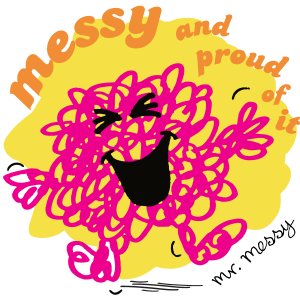My Goal
My personal learning focus over the last several years has included digital literacy, inquiry (professional and student) and mentorship. Now, as I explore Teacher Librarianship and the potential of the Learning Commons, I want to explore how these areas inform my understanding of the Teacher Librarian role. Where is the common ground? How can I synthesize what I have learned with what I am learning?

Initial general brainstorming.
My Question
Consequently, I find myself drawn specifically to the collaborative role of the Teacher Librarian. For the CLA five Standards of Practice for Effective School Library Learning Commons (2014, p. 10) to be realized, effective collaboration between the Teacher Librarian and fellow teachers is necessary.

Canadian Library Association. (2014). Leading Learning: standards of practice for school library learning commons in Canada
And so, I arrive at my question: How can the Teacher Librarian effectively collaborate with other teachers in order to establish the CLA Standards of Practice for an effective school library Learning Commons?
My Gameplan
Given the emerging popularity of mentorship, digital literacy, student inquiry and professional inquiry, there are many definitions and approaches available. Before finding common ground between these concepts, I need to first clarify my understandings and my language.
Next, I need to begin to synthesise these concepts through the lens of the Teacher Librarian role. To do that, I need to break down and simplify (for this purpose) the collaborative role(s) of the Teacher Librarian. At this point, I believe I have found three main collaborative roles:
- The Teacher Librarian as a mentor.
- The Teacher Librarian as a facilitator of professional inquiry.
- The Teacher Librarian as co-designer and co-facilitator of learning opportunities.
Finally, as I engage in the course discussions and readings, I need to allow my ideas evolve and mesh. Basically, I need to see what happens . . .

Mindmap using Total Recall app on iPad.
General thoughts and responses to Leading Learning
I applaud the clear statement that a school Library Learning Commons is meant to “facilitat[e] knowledge creation” and build a “participatory learning community” (CLA, 2014, p. 3-4). As well, although standards and sub themes can make many uneasy, everyone has to start somewhere and many people will benefit from having a road map. It is a serious paradigm shift to move from libraries as reservoirs of knowledge and resources to collaborative communities that create rather than uncover knowledge. Any assistance in such a shift is beneficial.
Readings/Resources (used specifically in second mind map)
Canadian Library Association. (2014). Leading Learning: standards of practice for school library learning commons in Canada. Ottawa: ON. Retrieved from http://clatoolbox.ca/casl/slic/llsop.pdf
Halbert, J. & Kaser, L. (2013). Spirals of inquiry: For equity and quality. Vancouver, BC: BC Principals’ and Vice-Principals’ Association.
Stephenson, N. Introduction for inquiry based learning. Retrieved from http://www.teachinquiry.com/index/Introduction.html.
Stokes-Bennett, D. (2014). Just Do It: Designing and Implementing a Digital Literacy Course in a Public High School. Retrieved from http://dspace.library.uvic.ca:8080/bitstream/handle/1828/4727/Stokesbennett_Devon_MEd_2013.pdf?sequence=1
Zachary, L. (2012). The Mentor’s Guide: Facilitating Effective Learning Relationships (second Edition). San Francisco; Jossey-Bass.
 Describe an effective collaboration between a teacher librarian and a teacher or teachers that you have participated in or observed. In your opinion, what are some necessary factors for effective teacher / teacher librarian collaboration to occur? What are some challenges and obstacles that can hinder or prevent effective collaboration between teachers and teacher librarians?
Describe an effective collaboration between a teacher librarian and a teacher or teachers that you have participated in or observed. In your opinion, what are some necessary factors for effective teacher / teacher librarian collaboration to occur? What are some challenges and obstacles that can hinder or prevent effective collaboration between teachers and teacher librarians?







